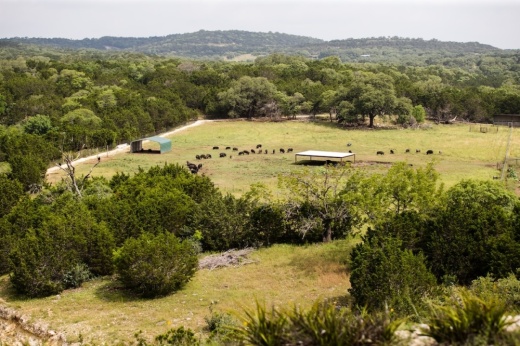How we got here
Wildlife Rescue & Rehabilitation, or WRR, started from “literally nothing” back in 1977, Founder and President Lynn Cuny said.
“The whole concept of rehabilitation and rescue wasn’t really in existence in Texas, back then,” Cuny said. “Nothing like what we do now.”
Cuny said she felt obligated to prevent the death or mistreatment of animals found in urban areas that could instead easily be rescued, rehabilitated and released back into the wild.

Thus, WRR was born in Cuny’s own backyard in the Alamo City. By 1986, the operation had to be moved to a 21-acre facility and was eventually expanded to its current 212-acre sanctuary in Kendalia in 2001.
By the numbers
Take a look at some of the figures that represent the work that WRR does in the region:
- 10,000 animals received for rehabilitation each year
- 600 permanent sanctuary residents
- 200,000 animals released back into the wild since 1977
- 55 full-time staff members
WRR’s sanctuary in Kendall County is home to hundreds of displaced animals rescued from not just the San Antonio area, but across the entire country.
Cuny said the farthest she’s seen an animal travel to the complex was all the way from Maine.
The sanctuary’s Executive Director, Ashton Kuhn, said the primary goal of operations is to limit exposure to human contact and give them the best possible chance to thrive and survive.
“We leave the animals alone as much as possible,” Kuhn said.
There is two separate avenues for animals at the sanctuary, according to Kuhn—a side for rehabilitation and eventual release of native species, and another which provides permanent sanctuary for those critically injured or released from labs or the pet trade.

For these full-time residents, Kuhn said making living arrangements as natural as possible is key.
“Every single decision that we make is going to be made with the intention of if [the animal] could choose on their own, what would they do?” Kuhn said.
Some of the animals taking residence at the shelter include a range of primates like macaques, spider monkeys and lemurs, along with other mammals like coyotes, bobcats, foxes and porcupines.
The big picture
Overall, Cuny said that although the efforts of WRR are relatively small compared to the dangers that native animals face as a whole, doing something is better than doing nothing at all.
“These animals want to live. That one possum, that one rattlesnake, that one butterfly, they want to be here,” Cuny said. “We need to remind ourselves that we’re not the only species on the planet that matters.”
- Serving Boerne, San Antonio and surrounding areas
- www.wildlife-rescue.org





